From disappointing marketing trends to the generally divisive feel in the country, after the cataclysmic pandemic year we had in 2020, we all had great hopes that 2021 would make all things right again. It didn’t. We started off the year watching thousands of people storm the U.S. Capitol angry about the Presidential election. COVID had a huge resurgence throwing the country into some pathogenic Groundhog Day. Then a failed Texas Power Grid left millions without power and caused billions in damages. That was just the first 60 days!
The rest of 2021 brought issues with national and international supply chains, the “Great Resignation,” and massive struggles for restaurants, healthcare, transportation, education, and services companies especially. All topped off with soaring inflation and a general feeling of national dissatisfaction. Clearly, it would be great if marketing and consumer spending was impervious to all of that. But we all know that’s not true. The good news? 2022 is going to be a much better year. How do we know? Keep reading.
16 MARKETING TRENDS, PREDICTIONS, AND PROMISES FOR THE NEW YEAR
1. The Great Resignation Will Continue
In 2021, a full quarter of the American workforce quit their jobs to do something else. While that number is staggering, consider this: 73 percent of employees thought about quitting. That didn’t just change because the calendar did. Broken company cultures. Remote work. Difficult jobs the pandemic made even harder. Companies requiring people to work in the office. Younger workers wanting flexibility and to make a more meaningful contribution. There are dozens of very real factors shaping the employment picture. As both companies and employees figure out the way forward, expect the mass employee rearrangement to continue.
2. Flexibility Will Be An Ongoing Focus
To require people to work at the office or to allow them to work elsewhere? That is the question. And it’s not an easy one. Companies are sitting on expansive office space that took trillions of dollars to build and equip. Now, thanks to the COVID lockdown, everyone wants to work from home. Younger employees seem especially adamant that flexibility has to be part of the plan. According to a recent worldwide EY survey of what nearly 10,000 workers wanted, flexibility ranked just behind competitive pay and ahead of healthcare. It can’t be ignored. This year, one marketing trend we think you’ll see more of is companies taking the position IBM CEO Arvind Krishna took in a recent Fast Company article. “Why should I, as an employer, care as long as you can get the work done and you’re highly productive?”
3. More Companies Will Pay Attention To Their Culture
The writing is on the wall about the importance of company culture. That’s why for those paying attention, the Great Resignation is really the Great Opportunity.







